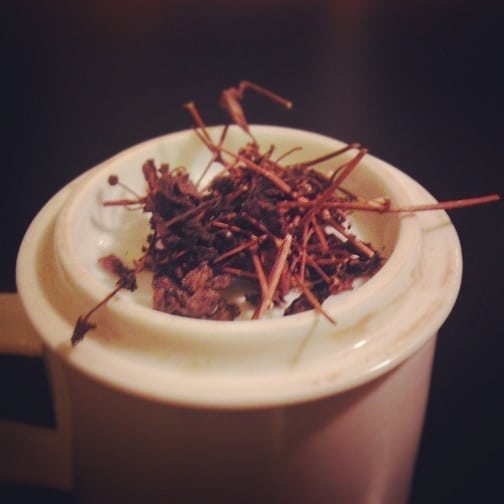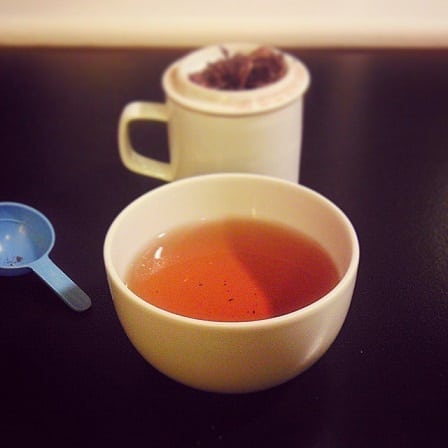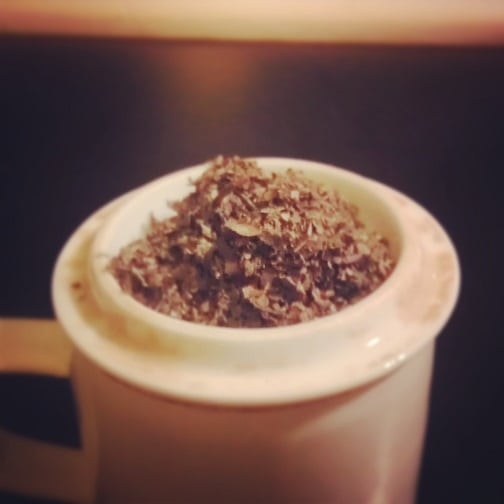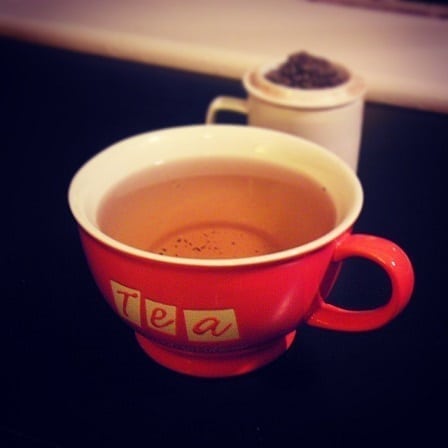Roughly four years ago, I wrote about a unique Hawaiian herb often used for herbal infusions. It was called Mamaki, but its science-y delineation was Pipturus albidus. The herb was a cousin of stinging nettle, and I felt some of those traits showed up in the taste. However, the product I had was blended with stevia, so my attempts at separating them may have been faulty.
In the same article, I made mention of another herb (or rather, set of herbs) collectively referred to as Ko’oko’olau (genus Bidens). They were often heralded for their purported health properties, and – like Mamaki – were used for tisanes. I never thought I’d get a crack at Ko’oko’olau until an opportunity came…from an old coworker.
Said coworker returned from a stint to Hawaii with her boyfriend. While there, they also spent time with her boyfriend’s brother…who just happened to be the co-founder of Mamaki Native Hawaiian Herbal Tea. They leased land (ahupuaʻa) in the district of Punaluʻu through the Kamehameha school district.

Yes, I thought that, too.
The goal of the school district – regarding the land – was to promote Hawaiian sustainability, but they only took in a few farmers at a time. And only if there was a clear goal in mind.

Well, tea is a clear enough goal to me.
I met up with my former coworker a week before my birthday, and she presented me with several sample bags from the farm. I was expecting the requisite Mamaki blends, but was shocked to discover a humble sammich bag with felt writing. It read: “Ko’oko’olau”. I just about leapt out of my own brain. It was from the farmer’s personal stash. Four years had passed, and the elusive herb came to me.
Alas, in the hustle and bustle of Fall, I completely forgot brew it up. It wasn’t until the ol’ coworker inquired about the tisanes a couple of months later, my memory finally jogged. She asked me if I had tried them yet.
I replied with, “Uh…trying them right now as a matter of fact.”
*Cue nervous laughter*
Then hastily got to brewing.
First up was the Ko’oko’olau.

The herbal mix was mainly leaf parts and twigs, but what I found surprising was how oxidized they looked. They were so brown that I wondered if they’d been roasted to speed up the drying. That was something I felt wasn’t done enough with herbs – oxidation. I always wondered if the flavor profile on some herbs would be more robust.
I wasn’t sure what the proper brewing technique was for this, so I went with a default tisane approach: 1 tsp., a 6oz. steeper cup of boiled water, and a five-minute wait.

The resulting liquor was a light crimson, similar to a Darjeeling black – only more rustic. There wasn’t much of an aroma, but it was pleasant and slightly sweet. The taste outright slapped me with excellence. It was like a Japanese sencha had an extramarital affair with lemon verbena…and invited a gingersnap cookie to film the proceedings. Expectedly herbaceous, but sweet and calming.
While I was on a roll, I figured I would fire up the kettle for some of the farm’s flagship Mamaki. I was initially disappointed to notice that the loose leaves were practically fannings.

Not only would straining be difficult, but I had no clue how the flavor would turn out. The smaller the leave particles, the more surface are for flavor yield – true – but I was skeptical. Optimistically so, though.
The brewing guide for this one was also a little bizarre. Per the MNHHT site, they recommended bringing 8 cups of water to a boil, adding a tablespoon of herb to it, and letting the boil continue for another five minutes. Once the boil was done, they suggested letting the concoction steep for another fifteen. Preferable results also came from overnight infusions.
Those instructions barely made me flinch. I sounded very similar to the way Greek Mountain “tea” was brewed. Bring it, I challenged.

I’ll be darned if they don’t know what they’re talking about. The liquor brewed just as dark as the Ko’oko’olau with a nettle-ish aroma. However, the true test of its character was on taste. Unlike the whole leaf Mamaki I tried years ago, this was creamy and sweet. It was more akin to guayusa or Yaupon holly than it was stinging nettle. The aftertaste was layered and felt like a blanket of…niceness in its lingering velvety yumminess.
As to favorites, though, gotta go with the Ko’oko’olau. It was something I wish I had more of. Mamaki was only a hair behind in flavorful experience. According to the Almighty Wiki, the genus Bidens family of plants are threatened by habitat loss. Now more than ever, attempts to promote farming sustainability are crucial. If only to put more delicious herbs in my cup.





